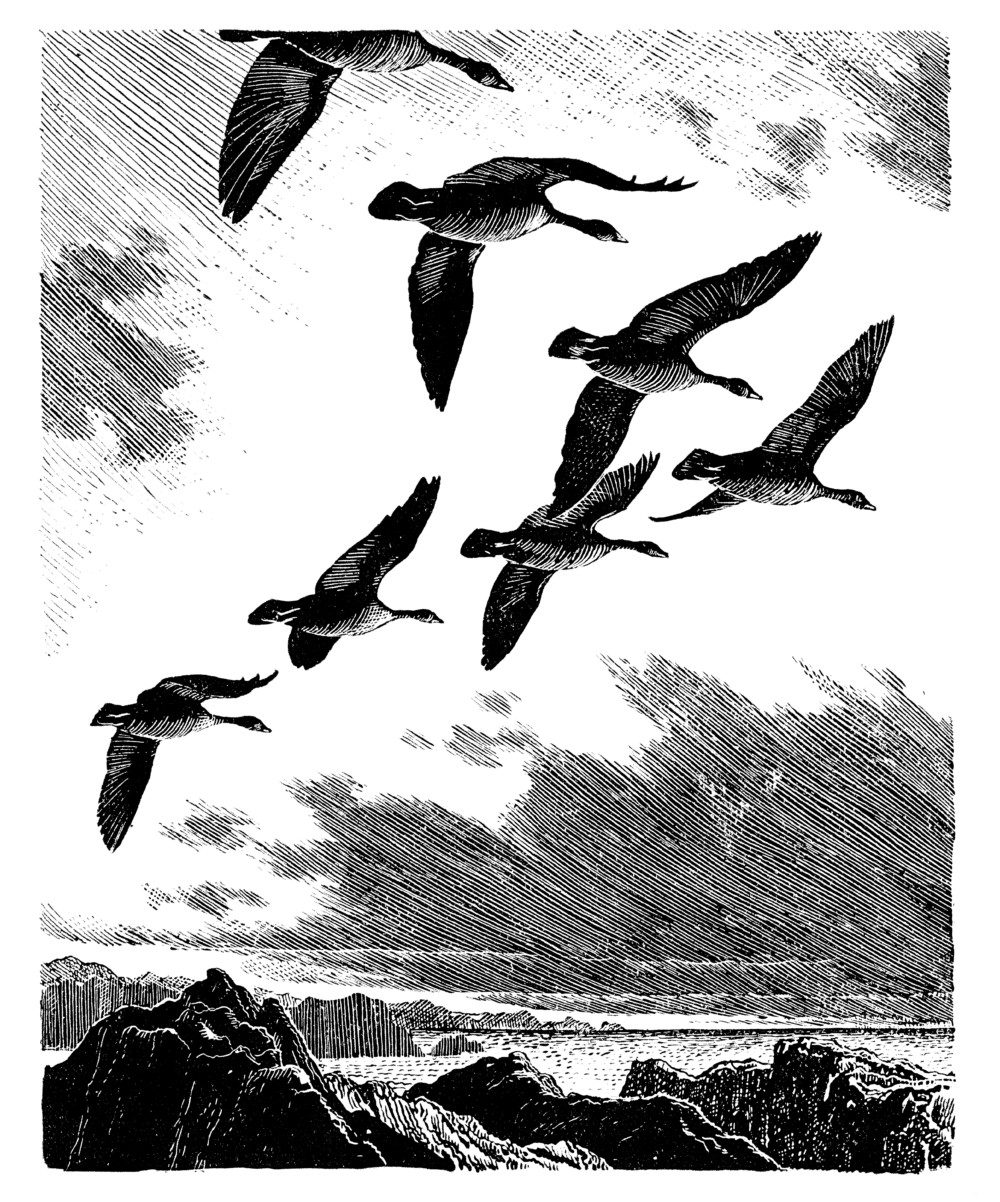‘The essays sparkle with precise details. Whether he’s picking out the order of birdsong at dawn in a Wisconsin wood, following a mink track through the snow in January or tracing the first signs of thaw in spring, the essays are warm, beautiful things. They have some of the aphoristic appeal of Emerson, the wildness of Thoreau, the poetry of Whitman – but it’s the rhythm of them that gets you . . .’
Galen O’Hanlon celebrating the ‘powerhouse of natural history’ Aldo Leopold and his collection of writing, A Sand County Almanac. C. F. Tunnicliffe’s skein of wild geese illustrated Galen’s article in Issue 54 of Slightly Foxed.
About the contributor
Charles Frederick Tunnicliffe was born in Macclesfield in 1901. He grew up on a farm in Sutton around the wildlife which would later influence his work, and studied at the Macclesfield School of Art before gaining a scholarship to the Royal College of Art. Tunnicliffe worked with several media, including watercolour, oil painting, etching and woodengraving. He is best known for his closely observed depictions of birds and wildlife, which he portrayed within their natural settings as part of the landscape. His illustrations have been used in over 250 books by various publishers including Faber, Cambridge University Press and Harper Collins.





